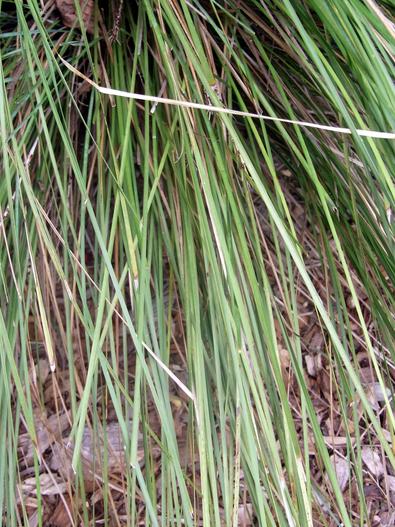Mat Rush
(Lomandra fluviatilis)
Mat Rush (Lomandra fluviatilis)
/
/

Poyt448, Peter Woodard
CC BY-SA 4.0
Image By:
Poyt448, Peter Woodard
Recorded By:
Copyright:
CC BY-SA 4.0
Copyright Notice:
Photo by: Poyt448, Peter Woodard | License Type: CC BY-SA 4.0 | License URL: https://creativecommons.org/licenses/by-sa/4.0 | Uploader: Poyt448 | Publisher: Wikipedia Commons




Estimated Native Range
Summary
Lomandra fluviatilis, commonly known as Mat Rush, is an evergreen perennial grass native to Australia, specifically found in a variety of habitats including grasslands, open forests, and along stream banks in New South Wales and Queensland. It typically grows to a height of 0.5-2 feet (0.15-0.6 meters) and a width of 2 feet (0.6 meters), forming dense tufts of narrow, strap-like leaves that are green to blue-green in color. The small, yellow to cream flowers are not particularly showy but are interesting upon close inspection, appearing in clusters from spring to early summer. The plant is also known for its tough, fibrous leaves, which were traditionally used by Indigenous Australians for weaving.
Mat Rush is valued for its drought tolerance and ability to stabilize soil, making it an excellent choice for erosion control. It is often used in landscaping for mass plantings, as a ground cover, or for border planting due to its neat, clumping habit. This plant is suitable for a range of soil types, provided they are well-drained, and it can thrive in both full sun and part shade. While it is generally low-maintenance, occasional trimming of old foliage can keep it looking tidy. It is also resistant to many pests and diseases, making it a reliable and hardy choice for gardens.CC BY-SA 4.0
Mat Rush is valued for its drought tolerance and ability to stabilize soil, making it an excellent choice for erosion control. It is often used in landscaping for mass plantings, as a ground cover, or for border planting due to its neat, clumping habit. This plant is suitable for a range of soil types, provided they are well-drained, and it can thrive in both full sun and part shade. While it is generally low-maintenance, occasional trimming of old foliage can keep it looking tidy. It is also resistant to many pests and diseases, making it a reliable and hardy choice for gardens.CC BY-SA 4.0
Plant Description
- Plant Type: Grass
- Height: 0.5-2 feet
- Width: 1-2 feet
- Growth Rate: Moderate
- Flower Color: N/A
- Flowering Season: Spring, Summer
- Leaf Retention: Evergreen
Growth Requirements
- Sun: Full Sun, Part Shade
- Water: Medium, High
- Drainage: Slow, Medium
Common Uses
Bee Garden, Butterfly Garden, Fragrant, Groundcover, Low Maintenance
Natural Habitat
A variety of habitats including grasslands, open forests, and along stream banks in New South Wales and Queensland
Other Names
Common Names:
Scientific Names: , Lomandra fluviatilis, Xerotes fluviatilis, Xerotes longifolia var. fluviatilis,
GBIF Accepted Name: Lomandra fluviatilis (R.Br.) A.T.Lee